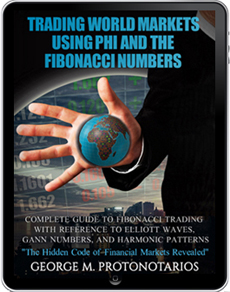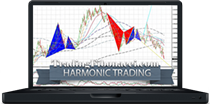The Japanese Candlesticks and Fibonacci Retracement
Candlestick formations were first identified in the 18th century by the Japanese rice trader Munehisa Homma. In the Western world, they were introduced in 1991 by Steve Nison (book: Japanese Candlestick Charting Techniques). Candlestick formations create an advanced communication bridge among global traders and can be seen as a complex trading language.
Trading with Candlestick Formations
Japanese Candlesticks and Fibonacci Retracement are frequently used together to enhance trading decisions. Candlestick patterns offer early clues about potential market reversals or trend continuations, while Fibonacci retracement levels highlight likely support and resistance areas during price pullbacks. Combining these tools helps traders identify more precise entry and exit points, confirm trend exhaustion, and improve the chances of successful trades.
Candlestick formations can be combined with other technical analysis tools to signal the ideal time to enter or exit a trade. For example, they can be used alongside the Fibonacci Retracement. A major advantage of using Japanese candlestick formations is that they provide an early sign of a market direction change. The most common reversal pattern traded is the U-turn.
Charting
A Japanese candlestick, like any other candlestick, is used to analyze price movements over time. The candlestick chart is a sophisticated tool that can be used as an alternative to a line chart or bar chart. There are many candlestick formations—more than a hundred—but fewer than ten are considered key. Japanese candlesticks can be identified on any timeframe (M5, M15, M30, H1, H4, D1, or longer).
Information Incorporated in Candlestick Formations
Candlestick formations consist of bodies and wicks and incorporate four types of information:
-
Opening price
-
Closing price
-
High price
-
Low price
The filled section of the candlestick is called the body, while the thin lines above and below the body are called shadows.
Chart: The Basic Candlestick Formation

Notes:
- If the closing price is above the opening price, a hollow candlestick appears (usually colored white).
- If the closing price is below the opening price, a filled candlestick appears (usually colored black).
Basic Candlestick Patterns
There are dozens of recognizable candlestick patterns, but here are the most important:
-
Doji Formation
-
Hammer Formation / Hanging Man
-
Shooting Star Formation / Inverted Hammer Formation
-
Morning Star Formation / Evening Star
-
Harami Formation
-
Marubozu Formation
-
Three White Soldiers Formation / Three Black Crows Formation
-
Spinning Top Formation
-
Railway Tracks Formation
Combining Fibonacci Retracement with Japanese Candlesticks
The Fibonacci retracement can be combined with several technical analysis indicators, including candlestick patterns.
When combining Fibonacci retracement with Japanese candlesticks, the goal is to identify trend exhaustion (exhaustive candlesticks), which can occur after a strong bullish or bearish trend.
How to Combine Fibonacci Retracement with Japanese Candlesticks
-
The Fibonacci retracement tool is applied after the completion of a strong trend, during its correction phase.
-
Possible retracement zones are identified by Fibonacci levels (23.6%, 38.2%, 61.8%, and 78.6%).
-
When the price reaches a Fibonacci level, a reversal trade is not made unless a reversal candlestick pattern appears.
-
Once a reversal pattern appears, a position is opened, placing a stop-loss above or below the recent local high or low.
-
The most common reversal formations include the Hammer, Shooting Star, Spinning Top, and Railway Tracks.
■ The Japanese Candlesticks and Fibonacci Retracement
TradingFibonacci.com (c)
▶️ FIND OUT MORE AT TRADINGFIBONACCI.COM









